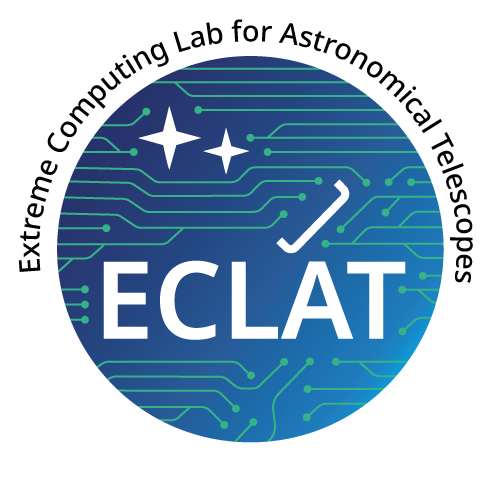Instrumentation for radio astronomy
At the heart of ECLAT, this fundamental focus supports all the technical and scientific developments. Structured into four main areas, it aims to meet the challenges of the SKA era.
Digital twins development
The increase in scale of flows, volumes, speed and performance in the SKA era requires advanced simulation solutions to anticipate and manage the logistical challenges associated with handling raw data from receivers. These flows must be in the format used by the community, compatible with existing or yet-to-be-developed processing tools and stress the importance of providing realistic content for these data to best meet the needs of radio astronomers. This work focuses on three key aspects:
- Standardised containers generation (standard format for storing visibilities in the form of Measurement Sets – MS), covering a broad spectrum of dimensionality (number of temporal, spectral and Fourier samples).
- Data generation, reflecting the wide diversity of radio sky sources in terms of size, distance, temporal and spectral variability, intensity and morphology, based on the expertise of the radio astronomer participants and on the instrumental response simulation tools already available for SKA.
- Management of simulations and benchmarking results, in order to study the influence of certain continuous parameters (e.g. for calibration or imaging), by setting up a common simulation database across ECLAT.
Advanced data processing methods
The challenges associated with interferometric imaging require precise processing to eliminate instrumental response. This process involves two major stages:
- Calibration, to minimise systematic and random errors/deviations in the instrument’s behaviour,
- Imaging & deconvolution, which, by solving an inverse problem, aims to correct the incomplete aperture synthesis of the interferometer and therefore the quality of the corresponding synthetic impulse response, which is different for each observation.
A key objective of this area is to identify generic treatments and those specific to a given use of the observations in order to avoid biasing the data published for the SRCs. The improvement of deconvolution algorithms and the use of reduced arithmetic accuracies will be explored in close collaboration with radio astronomers to guarantee the required scientific precision.
Development support for SRCs and preparation for operation
This area aims to align ECLAT developments with the needs of the SKA Data Challenges. The active participation of radio astronomers ensures that the proposed solutions meet the expectations of the scientific community, while taking into account the various use cases planned for SKA.
Prototyping and scientific exploitation
ECLAT has a central role in prototyping technical solutions for co-design. These prototypes can already considerably enhance the capabilities of demonstrators such as NenuFAR, thanks to:
-
Improved support for the storage and mandatory processing of NenuFAR raw data,
-
Facilitation of the distribution of HD data to French partners.
Research areas
Pushing the limits of innovation
Design of supercomputers
Research & development
Instrumentation for radio astronomy
Contributions to SKAO
Want to learn more?
Find out how you can contribute to innovation in astronomical research with ECLAT. Explore our pioneering projects and international collaborations to push back the frontiers of modern astronomy.
